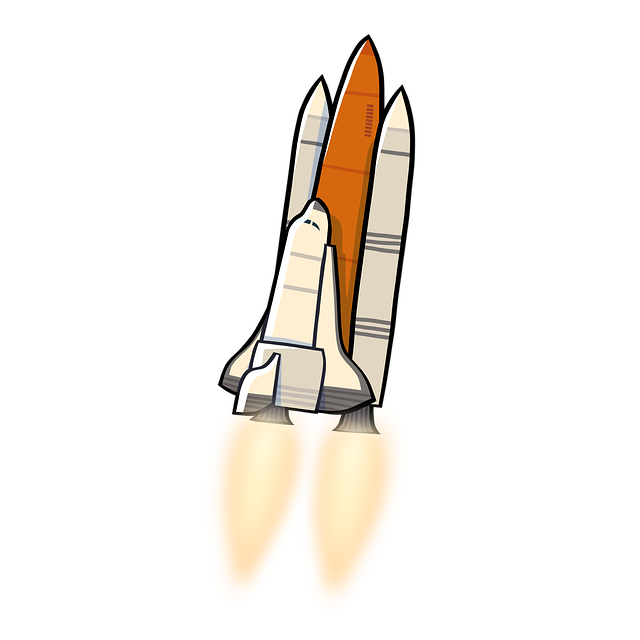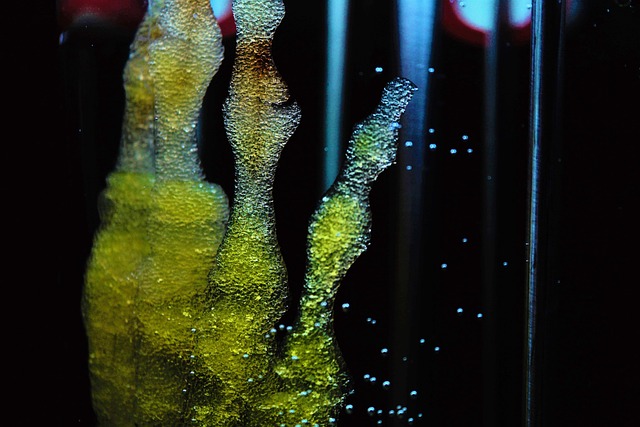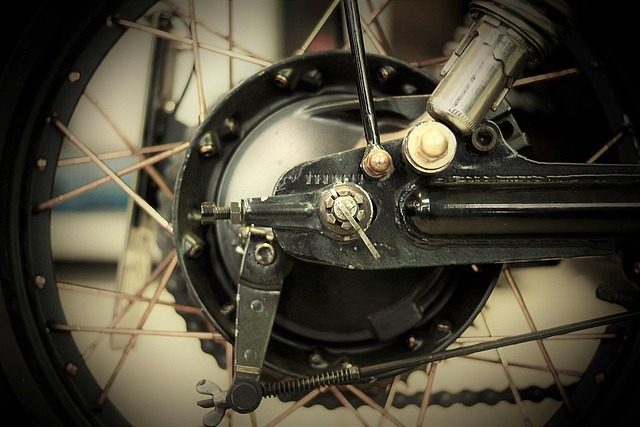Data availability
Single-cell RNA-sequencing data were obtained from http://mousebrain.org/, from the Gene Expression Omnibus under accession numbers GSE151530 and GSE140228) and from the Chinese National Gene Bank (CNP0000650). Raw data of this study were deposited to Zenodo, including raw images (HCC, https://doi.org/10.5281/zenodo.12750711; mouse embryo, https://doi.org/10.5281/zenodo.12750725; mouse brain: https://doi.org/10.5281/zenodo.12673246) and analysis-related data (https://doi.org/10.5281/zenodo.12755414)68,69,70,71. A website (http://www.spatialprism.org) is available to provide a clear understanding of PRISM’s capabilities.
Code availability
Source code is provided in a GitHub repository (https://github.com/HuangLab-PKU/PRISM-Code for gene-calling pipeline and https://github.com/HuangLab-PKU/PRISM-Analysis for post-gene-calling analysis).
References
-
Ståhl, P. L. et al. Visualization and analysis of gene expression in tissue sections by spatial transcriptomics. Science 353, 78–82 (2016).
Article
PubMedGoogle Scholar
- Advertisement - -
Rodriques, S. G. et al. Slide-seq: a scalable technology for measuring genome-wide expression at high spatial resolution. Science 363, 1463–1467 (2019).
Article
CAS
PubMed
PubMed CentralGoogle Scholar
-
Liu, Y. et al. High-spatial-resolution multi-omics sequencing via deterministic barcoding in tissue. Cell 183, 1665–1681 (2020).
Article
CAS
PubMed
PubMed CentralGoogle Scholar
-
Liu, Y. et al. High-plex protein and whole transcriptome co-mapping at cellular resolution with spatial CITE-seq. Nat. Biotechnol. 41, 1405–1409 (2023).
Article
CAS
PubMed
PubMed CentralGoogle Scholar
-
Marx, V. Method of the Year: spatially resolved transcriptomics. Nat. Methods 18, 9–14 (2021).
Article
CAS
PubMedGoogle Scholar
-
Cao, J. et al. Decoder-seq enhances mRNA capture efficiency in spatial RNA sequencing. Nat. Biotechnol. 42, 1735–1746 (2024).
Article
CAS
PubMedGoogle Scholar
-
Liu, L. et al. Spatiotemporal omics for biology and medicine. Cell 187, 4488–4519 (2024).
Article
CAS
PubMedGoogle Scholar
-
Schott, M. et al. Open-ST: high-resolution spatial transcriptomics in 3D. Cell 187, 3953–3972 (2024).
Article
CAS
PubMedGoogle Scholar
-
Bressan, D., Battistoni, G. & Hannon, G. J. The dawn of spatial omics. Science 381, eabq4964 (2023).
Article
CAS
PubMed
PubMed CentralGoogle Scholar
-
Femino, A. M., Fay, F. S., Fogarty, K. & Singer, R. H. Visualization of single RNA transcripts in situ. Science 280, 585–590 (1998).
Article
CAS
PubMedGoogle Scholar
-
Wang, F. et al. RNAscope: a novel in situ RNA analysis platform for formalin-fixed, paraffin-embedded tissues. J. Mol. Diagn. 14, 22–29 (2012).
Article
CAS
PubMed
PubMed CentralGoogle Scholar
-
Lubeck, E., Coskun, A. F., Zhiyentayev, T., Ahmad, M. & Cai, L. Single-cell in situ RNA profiling by sequential hybridization. Nat. Methods 11, 360–361 (2014).
Article
CAS
PubMed
PubMed CentralGoogle Scholar
-
Chen, K. H., Boettiger, A. N., Moffitt, J. R., Wang, S. & Zhuang, X. Spatially resolved, highly multiplexed RNA profiling in single cells. Science 348, aaa6090 (2015).
Article
PubMed
PubMed CentralGoogle Scholar
-
Codeluppi, S. et al. Spatial organization of the somatosensory cortex revealed by osmFISH. Nat. Methods 15, 932–935 (2018).
Article
CAS
PubMedGoogle Scholar
-
Eng, C.-H. L. et al. Transcriptome-scale super-resolved imaging in tissues by RNA seqFISH+. Nature 568, 235–239 (2019).
Article
CAS
PubMed
PubMed CentralGoogle Scholar
-
Xia, C., Fan, J., Emanuel, G., Hao, J. & Zhuang, X. Spatial transcriptome profiling by MERFISH reveals subcellular RNA compartmentalization and cell cycle-dependent gene expression. Proc. Natl Acad. Sci. USA 116, 19490–19499 (2019).
Article
CAS
PubMed
PubMed CentralGoogle Scholar
-
Wang, Y. et al. EASI-FISH for thick tissue defines lateral hypothalamus spatio-molecular organization. Cell 184, 6361–6377 (2021).
Article
CAS
PubMedGoogle Scholar
-
He, S. et al. High-plex imaging of RNA and proteins at subcellular resolution in fixed tissue by spatial molecular imaging. Nat. Biotechnol. 40, 1794–1806 (2022).
Article
CAS
PubMedGoogle Scholar
-
Larsson, C., Grundberg, I., Söderberg, O. & Nilsson, M. In situ detection and genotyping of individual mRNA molecules. Nat. Methods 7, 395–397 (2010).
Article
CAS
PubMedGoogle Scholar
-
Ke, R. et al. In situ sequencing for RNA analysis in preserved tissue and cells. Nat. Methods 10, 857–860 (2013).
Article
CAS
PubMedGoogle Scholar
-
Lee, J. H. et al. Highly multiplexed subcellular RNA sequencing in situ. Science 343, 1360–1363 (2014).
Article
CAS
PubMed
PubMed CentralGoogle Scholar
-
Wang, X. et al. Three-dimensional intact-tissue sequencing of single-cell transcriptional states. Science 361, eaat5691 (2018).
Article
PubMed
PubMed CentralGoogle Scholar
-
Chen, X. et al. High-throughput mapping of long-range neuronal projection using in situ sequencing. Cell 179, 772–786 (2019).
Article
CAS
PubMed
PubMed CentralGoogle Scholar
-
Gyllborg, D. et al. Hybridization-based in situ sequencing (HybISS) for spatially resolved transcriptomics in human and mouse brain tissue. Nucleic Acids Res. 48, e112 (2020).
Article
CAS
PubMed
PubMed CentralGoogle Scholar
-
Sountoulidis, A. et al. SCRINSHOT enables spatial mapping of cell states in tissue sections with single-cell resolution. PLoS Biol. 18, e3000675 (2020).
Article
CAS
PubMed
PubMed CentralGoogle Scholar
-
Chang, T. et al. Rapid and signal crowdedness-robust in situ sequencing through hybrid block coding. Proc. Natl Acad. Sci. USA 120, e2309227120 (2023).
Article
CAS
PubMed
PubMed CentralGoogle Scholar
-
Shi, H. et al. Spatial atlas of the mouse central nervous system at molecular resolution. Nature 622, 552–561 (2023).
Article
CAS
PubMed
PubMed CentralGoogle Scholar
-
Lubeck, E. & Cai, L. Single-cell systems biology by super-resolution imaging and combinatorial labeling. Nat. Methods 9, 743–748 (2012).
Article
CAS
PubMed
PubMed CentralGoogle Scholar
-
Vu, T. et al. Spatial transcriptomics using combinatorial fluorescence spectral and lifetime encoding, imaging and analysis. Nat. Commun. 13, 169 (2022).
Article
CAS
PubMed
PubMed CentralGoogle Scholar
-
Wei, L. et al. Super-multiplex vibrational imaging. Nature 544, 465–470 (2017).
Article
CAS
PubMed
PubMed CentralGoogle Scholar
-
Hong, F. et al. Thermal-plex: fluidic-free, rapid sequential multiplexed imaging with DNA-encoded thermal channels. Nat. Methods 21, 331–341 (2024).
Article
CAS
PubMedGoogle Scholar
-
Deng, R. et al. DNA-sequence-encoded rolling circle amplicon for single-cell RNA imaging. Chem 4, 1373–1386 (2018).
Article
CASGoogle Scholar
-
Tasic, B. et al. Adult mouse cortical cell taxonomy revealed by single cell transcriptomics. Nat. Neurosci. 19, 335–346 (2016).
Article
CAS
PubMed
PubMed CentralGoogle Scholar
-
Cao, J. et al. The single-cell transcriptional landscape of mammalian organogenesis. Nature 566, 496–502 (2019).
Article
CAS
PubMed
PubMed CentralGoogle Scholar
-
Chen, A. et al. Spatiotemporal transcriptomic atlas of mouse organogenesis using DNA nanoball-patterned arrays. Cell 185, 1777–1792 (2022).
Article
CAS
PubMedGoogle Scholar
-
Le, T. N. et al. GABAergic interneuron differentiation in the basal forebrain is mediated through direct regulation of glutamic acid decarboxylase isoforms by Dlx homeobox transcription factors. J. Neurosci. 37, 8816–8829 (2017).
Article
CAS
PubMed
PubMed CentralGoogle Scholar
-
Zhou, T. et al. Spatiotemporal characterization of human early intervertebral disc formation at single-cell resolution. Adv. Sci. 10, 2206296 (2023).
Article
CASGoogle Scholar
-
Nóbrega-Pereira, S. et al. Postmitotic Nkx2-1 controls the migration of telencephalic interneurons by direct repression of guidance receptors. Neuron 59, 733 (2008).
Article
PubMed
PubMed CentralGoogle Scholar
-
Striedter, G. F. & Northcutt, R. G. The independent evolution of dorsal pallia in multiple vertebrate lineages. Brain Behav. Evol. 96, 200–211 (2021).
Article
PubMedGoogle Scholar
-
Kaiser, K. et al. WNT5A is transported via lipoprotein particles in the cerebrospinal fluid to regulate hindbrain morphogenesis. Nat. Commun. 10, 1498 (2019).
Article
PubMed
PubMed CentralGoogle Scholar
-
Zhang, Q. et al. Landscape and dynamics of single immune cells in hepatocellular carcinoma. Cell 179, 829–845 (2019).
Article
CAS
PubMedGoogle Scholar
-
Sun, Y. et al. Single-cell landscape of the ecosystem in early-relapse hepatocellular carcinoma. Cell 184, 404–421 (2021).
Article
CAS
PubMedGoogle Scholar
-
Ma, L. et al. Single-cell atlas of tumor cell evolution in response to therapy in hepatocellular carcinoma and intrahepatic cholangiocarcinoma. J. Hepatol. 75, 1397–1408 (2021).
Article
CAS
PubMed
PubMed CentralGoogle Scholar
-
Chitra, U. et al. Mapping the topography of spatial gene expression with interpretable deep learning. Nat. Methods 22, 298–309 (2025).
Article
CAS
PubMed
PubMed CentralGoogle Scholar
-
Zheng, C. et al. Transcriptomic profiles of neoantigen-reactive T cells in human gastrointestinal cancers. Cancer Cell 40, 410–423 (2022).
Article
PubMedGoogle Scholar
-
Dong, K. & Zhang, S. Deciphering spatial domains from spatially resolved transcriptomics with an adaptive graph attention auto-encoder. Nat. Commun. 13, 1739 (2022).
Article
CAS
PubMed
PubMed CentralGoogle Scholar
-
So, J., Kim, A., Lee, S.-H. & Shin, D. Liver progenitor cell-driven liver regeneration. Exp. Mol. Med 52, 1230–1238 (2020).
Article
CAS
PubMed
PubMed CentralGoogle Scholar
-
Liu, K., Wang, F.-S. & Xu, R. Neutrophils in liver diseases: pathogenesis and therapeutic targets. Cell Mol. Immunol. 18, 38–44 (2021).
Article
CAS
PubMedGoogle Scholar
-
Wang, Y. et al. Spatial maps of hepatocellular carcinoma transcriptomes reveal spatial expression patterns in tumor immune microenvironment. Theranostics 12, 4163–4180 (2022).
Article
CAS
PubMed
PubMed CentralGoogle Scholar
-
Tang, Z. et al. Spatial transcriptomics reveals tryptophan metabolism restricting maturation of intratumoral tertiary lymphoid structures. Cancer Cell 43, 1025–1044 (2025).
Article
CAS
PubMedGoogle Scholar
-
Schmidt, U., Weigert, M., Broaddus, C. & Myers, G. Cell detection with star-convex polygons. In Proceedings of the 2018 International Conference of Medical Image Computing and Computer Assisted Intervention (eds. Frangi, A. F., Schnabel, J. A., Davatzikos, C., Alberola-López, C. & Fichtinger, G.) (Springer, 2018).
-
Weigert, M., Schmidt, U., Haase, R., Sugawara, K. & Myers, G. Star-convex polyhedra for 3D object detection and segmentation in microscopy. In Proceedings of the 2020 IEEE Winter Conference on Applications of Computer Vision (eds Ross, A., Cox, D. & McCloskey, S.) (IEEE, 2020).
-
Raj, A., Van Den Bogaard, P., Rifkin, S. A., Van Oudenaarden, A. & Tyagi, S. Imaging individual mRNA molecules using multiple singly labeled probes. Nat. Methods 5, 877–879 (2008).
Article
CAS
PubMed
PubMed CentralGoogle Scholar
-
Liu, S. et al. Barcoded oligonucleotides ligated on RNA amplified for multiplexed and parallel in situ analyses. Nucleic Acids Res. 49, e58 (2021).
Article
CAS
PubMed
PubMed CentralGoogle Scholar
-
Marras, S. A. E., Bushkin, Y. & Tyagi, S. High-fidelity amplified FISH for the detection and allelic discrimination of single mRNA molecules. Proc. Natl Acad. Sci. USA 116, 13921–13926 (2019).
Article
CAS
PubMed
PubMed CentralGoogle Scholar
-
Smith, K. et al. CIDRE: an illumination-correction method for optical microscopy. Nat. Methods 12, 404–406 (2015).
Article
CAS
PubMedGoogle Scholar
-
Chalfoun, J. et al. MIST: accurate and scalable microscopy image stitching tool with stage modeling and error minimization. Sci. Rep. 7, 4988 (2017).
Article
PubMed
PubMed CentralGoogle Scholar
-
Lionnet, T. et al. A transgenic mouse for in vivo detection of endogenous labeled mRNA. Nat. Methods 8, 165–170 (2011).
Article
CAS
PubMed
PubMed CentralGoogle Scholar
-
Saunders, R. A. et al. A platform for multimodal in vivo pooled genetic screens reveals regulators of liver function. Preprint at bioRxiv https://doi.org/10.1101/2024.11.18.624217 (2024).
-
Wheat, J. C. et al. Single-molecule imaging of transcription dynamics in somatic stem cells. Nature 583, 431–436 (2020).
Article
CAS
PubMed
PubMed CentralGoogle Scholar
-
Korsunsky, I. et al. Fast, sensitive and accurate integration of single-cell data with Harmony. Nat. Methods 16, 1289–1296 (2019).
Article
CAS
PubMed
PubMed CentralGoogle Scholar
-
McInnes, L., Healy, J., Saul, N. & Großberger, L. UMAP: uniform manifold approximation and projection. J. Open Source Softw. 3, 861 (2018).
Article
Google Scholar
-
Cheng, S. et al. A pan-cancer single-cell transcriptional atlas of tumor infiltrating myeloid cells. Cell 184, 792–809 (2021).
Article
CAS
PubMedGoogle Scholar
-
Palla, G. et al. Squidpy: a scalable framework for spatial omics analysis. Nat. Methods 19, 171–178 (2022).
Article
CAS
PubMed
PubMed CentralGoogle Scholar
-
Csardi, G. & Nepusz, T. The igraph software package for complex network research. InterJournal Complex Systems, 1695 (2005).
Google Scholar
-
Reina-Campos, M. et al. Tissue-resident memory CD8 T cell diversity is spatiotemporally imprinted. Nature 639, 483–492 (2025).
Article
CAS
PubMed
PubMed CentralGoogle Scholar
-
Dong, K. & Zhang, S. Deciphering spatial domains from spatially resolved transcriptomics with an adaptive graph attention auto-encoder. Nat. Commun. 13, 1–12 (2022).
CAS
Google Scholar
-
Chang, T. et al. PRISM: 2D HCC raw images and labeled RNA spots. Zenodo https://doi.org/10.5281/zenodo.13208941 (2024).
-
Chang, T. et al. PRISM: 2D embryo (30plex and 64plex) raw images and labeled RNA spots. Zenodo https://doi.org/10.5281/zenodo.13219763 (2024).
-
Chang, T. et al. PRISM: 3D mouse brain raw images and labeled RNA spots. Zenodo https://doi.org/10.5281/zenodo.12673246 (2024).
-
Chang, T. et al. PRISM: analysis related data. Zenodo https://doi.org/10.5281/zenodo.12755414 (2024).
Download references
Acknowledgements
We thank Y. Liang of the State Key Laboratory of Membrane Biology and L. Fu of the School of Life Sciences and National Biomedical Imaging Center at Peking University for assistance with confocal microscopy imaging. We thank L. Wang for experimental assistance. This work was supported by grants from the National Natural Science Foundation of China (T2188102 to Y.H. and T2225005 to J.W.), Beijing National Laboratory for Molecular Sciences (BNLMS-CXTD-202401 to Y.H.), Noncommunicable Chronic Diseases National Science and Technology Major Project (2023ZD0520400 to C.Z.), Beijing Municipal Science and Technology Commission Grant (Z221100007022003 to Y.H.), Ministry of Science and Technology Grant (2018YFA0800200 to J.W.) and Clinical Medicine Plus X Young Scholars Project of Peking University, from the Fundamental Research Funds for the Central Universities (PKU2024LCXQ020 and PKU2025PKULCXQ023 to C.Z.).
Ethics declarations
Competing interests
Y.H., T.C., S.Z., K.D., M.T., Z.L., M.J. and W.H. have applied for a patent (CN117265074A) related to this work. The remaining authors declare no competing interests.
Peer review
Peer review information
Nature Biotechnology thanks Kok Hao Chen, Sanjay Tyagi and the other, anonymous, reviewer(s) for their contribution to the peer review of this work.
Additional information
Publisher’s note Springer Nature remains neutral with regard to jurisdictional claims in published maps and institutional affiliations.
Extended data
Extended Data Fig. 1 Radius vector filtering.
a, Selection of different intersecting planes in color space. Different planes correspond to different barcode vector sets with various numbers of vectors. A well-balanced barcode set should consider both the number of barcodes and the neighbor angle. The neighbor angle, which indicates the dissimilarity between the closest barcodes (vectors), must be large enough to ensure accurate decoding of the barcodes. b, Workflow of signal spot decoding. In color space (Ch1, Ch2, Ch3), all spots were L1-normalized to the sum value of (Ch1+Ch2+Ch3), making all spots sum into ‘1’. All spots were therefore projected onto a 2-D plane. Subsequently, the Ch4 value was added as the third axis, creating a new 3-D color space that visualizes all 30 clusters. c, PRISM barcode after radius vector filtering is robust to bias from heterogeneous amplification in RCA. Within the same barcode, absolute values of specific channel may vary between different rolling circle DNA nanoballs due to RCA heterogeneity, but the ratios of these values remain consistent. Scale bar: 500 nm.
Extended Data Fig. 2 Creation of color space.
Raw intensity from four channels was extracted for each spot. After intra-spot L1-normalization by sum (Ch1+Ch2+Ch3), intensity information from four channels (Ch1′, Ch2′, Ch3′, Ch4′) was converted into three-dimensional coordinates in color space (X in color space: 2*Ch3′-1, Y in color space: Ch2′-Ch1′, Z in color space: Ch4′). Scale bar: 10 µm.
Extended Data Fig. 3 Gene calling workflow.
a, Intensity distribution of each channel after normalization. A small random number was introduced to coordinates from each spot to improve the assessment of cluster distribution. This modification results in the formation of a pseudo-Gaussian distribution at endpoint ‘0’ and ‘1’ (for example barcode 4000, 0040), allowing for an equal evaluation between these endpoint clusters and other clusters. b, Intensity distribution of Ch1, Ch2 and Ch3 under Ch4=0 and Ch4=1, respectively. c, Gene calling based on spots position in color space. The distribution of the 30 barcode clusters can be observed through different cross-sections and projections. Gaussian fitting was utilized to measure the separation between adjacent clusters. Manual delineation of three-dimensional boundaries for each cluster in the color space was performed for gene calling.
Extended Data Fig. 4 Spatial expression patterns of 30 called genes for mouse brain coronal section.
For better visualization, the transcripts are down-sampled (coarse-grained). The dynamic range of transcripts density (counts per 100 x 100 pixel2, 1 pixel = 0.1625 µm) is represented as shown in the colormap in each image. Scale bar: 1 mm.
Extended Data Fig. 5 PRISM decoding accuracy characterization.
a, Experimental workflow of PRISM decoding accuracy check. After PRISM fluorescent staining and gene identification, the imaging probes were stripped away. Subsequently, fluorescently labeled nanoball-check probe that specifically targeted at rolling circle nanoballs (targeting mRNA-binding region, shown as magenta) of individual gene was applied to reveal the ground truth position of nanoball. This process was performed iteratively within a flow cell for checking different genes. We then overlapped the decoded specific gene coordinate (from PRISM experiment) with corresponding gene’s nanoball-check image one-by-one to examine decoding accuracy. b, Decoding accuracy calculation. The decoding accuracy for each gene was calculated as the ratio of PRISM-decoded spots overlapping with nanoball-check-probe stained spots to the total PRISM-decoded spots. Fluorescent intensity value was obtained by reading the nanoball-check image using coordinates decoded by PRISM. The intensity frequency distribution was plotted to characterize the decoding accuracy. Correctly decoded spots (overlapping with nanoball-check-probe stained spots) formed a near-Gaussian distribution (right peak), while false-decoded spots (‘non-overlapping’) appeared as a sharp left peak. The proportion of non-overlapping coordinates defined the false decoding rate. Four different barcodes/genes were analyzed, yielding an average false decoding rate of 4.33%. Scale bar: 1 mm.
Extended Data Fig. 6 Reagent penetration in thick tissue.
Seven distinct regions (200 µm x 200 µm x 100 µm) within the mouse brain were selected for conducting a reagent penetration test. The penetration performance in thick tissue was reflected by overall extracted signal distribution along z-axis. Thickness: 100 µm, Scale bar: 30 µm.
Extended Data Fig. 7 PRISM barcode expansion to 64-plex by increasing intensity levels.
Ch1, Ch2 and Ch3 were quantized into fifths (0, 1/5, 2/5, 3/5, 4/5 and 5/5) and Ch4 was divided into high (2), low (1) and zero (0). This expansion resulted in an increased coding capacity of 64 (21*3+1).
Extended Data Fig. 8 Spatial expression pattern comparison between 64-plex PRISM and MOSTA database.
This comparison was performed using sagittal sections of mouse embryos at E14.5 stage. Selected data has a similar sectioning position (matched anatomical regions) as our data. Scale bar: 1 mm.
Extended Data Fig. 9 PRISM decoding accuracy characterization for 64-plex assay on mouse brain tissue.
Experiment and analysis were performed the same with Extended Data Fig. 5. Briefly, after PRISM fluorescent staining and gene identification, the imaging probes were stripped away. Subsequently, fluorescently-labeled nanoball-check probe that specifically targeted sat rolling circle nanoballs (targeting mRNA-binding region) of individual gene was applied to reveal the ground truth position of nanoball. The decoding accuracy for each gene was calculated as the ratio of PRISM-decoded spots overlapping with nanoball-check-probe stained spots to the total PRISM-decoded spots. The proportion of non-overlapping coordinates defined the false decoding rate. The average false decoding rate is calculated to be 4.20%. Scale bar: 1 mm.
Extended Data Fig. 10 PRISM decoding accuracy characterization for 64-plex assay on mouse embryo tissue.
Experiment and analysis were performed the same with Extended Data Fig. 5. Briefly, after PRISM fluorescent staining and gene identification, the imaging probes were stripped away. Subsequently, fluorescently-labeled nanoball-check probe that specifically targeted at rolling circle nanoballs (targeting mRNA-binding region) of individual gene was applied to reveal the ground truth position of nanoball. The decoding accuracy for each gene was calculated as the ratio of PRISM-decoded spots overlapping with nanoball-check-probe stained spots to the total PRISM-decoded spots. The proportion of non-overlapping coordinates defined the false decoding rate. The average false decoding rate is calculated to be 2.40%. Scale bar: 1 mm.
Supplementary information
Rights and permissions
Springer Nature or its licensor (e.g. a society or other partner) holds exclusive rights to this article under a publishing agreement with the author(s) or other rightsholder(s); author self-archiving of the accepted manuscript version of this article is solely governed by the terms of such publishing agreement and applicable law.
Reprints and permissions
About this article
Cite this article
Chang, T., Zhao, S., Deng, K. et al. High-plex spatial RNA imaging in one round with conventional microscopes using color-intensity barcodes.
Nat Biotechnol (2025). https://doi.org/10.1038/s41587-025-02883-7
Download citation
-
Received:
-
Accepted:
-
Published:
-
DOI: https://doi.org/10.1038/s41587-025-02883-7



